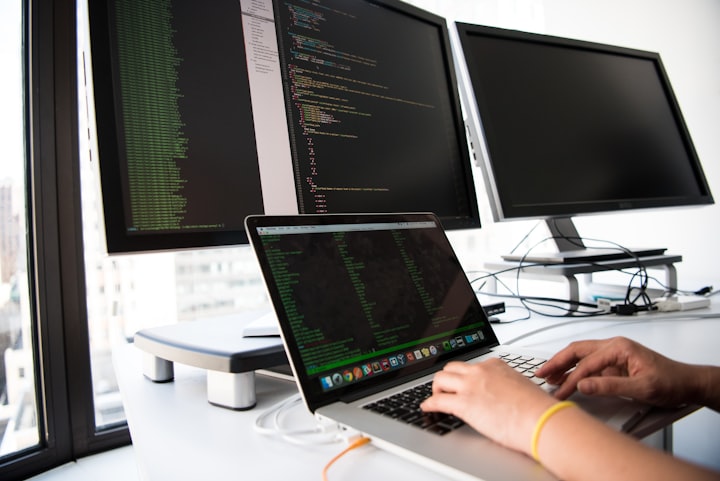What is Cyber Security? A Beginner’s Guide
With numerous reports of data breaches that affect private and corporate data, it is important to understand the concept of cybersecurity security is and the reasons why it is essential to our digital lives as well as work. It is the simplest way to understand that cyber security is all we do to minimize the threat of cyber-attacks.

This includes protecting devices (everything from laptops to phones and smart televisions) and internet-based services we use, such as social accounts on social media, work emails, and learning platforms.
Because so much of our business and personal information is stored on computers and on the Internet, An important aspect of cyber security is to keep that information secure.
In this short review, we'll look at the criminals who are cyber-attackers, the most typical cyberattacks, and tips to minimize the risk of cyberattacks. For more information on this rapidly growing field within the technological realm, take a look at our Cyber Security training course.
Cyber security threat actors
In the realm of cyber security, what precisely are we trying to shield ourselves from? We can divide the actors who pose threats into three categories:
Information thieves named address, postal and email addresses, banking information, and private business details -- these are all prime examples of important data. A lot of threat actors are specialized in obtaining this data for themselves or sell to other people.
Hackers: These people are focused on removing devices or services as well as organizations. Sometimes, this is due to motives of political importance, while in other instances, they act just because they have the ability.
Security agents for cyberwarfare In the event that a fresh cyber-attack is reported in the media, people want to find out the source of the threat. Common culprits include government actors. State-sponsored groups intentionally create threats to attack other states and weaken their infrastructure. Private and public sector businesses, as well as citizens, can get caught in the crossfire.
Five types of cyber-attacks
Malware: The word "malware" refers to any software that is malicious. It is a term a lot in relation to cyber security. It refers to any software program designed for malicious use. This includes malicious software that is designed to cause harm or gain access to networks or computers.
Ransomware: It is this kind of threat that is specifically designed to defraud. It prevents access to devices and data until a ransom has been paid to the person that is behind it. The payment of the ransom doesn't ensure immediate removal of the blocking. Lifted.
Attacks of Phishing: Before it can perform its task, a variety of malware-related programs need to be installed and activated by an innocent victim. Phishing is when hackers pretend to be a trustworthy source and entice victims into clicking on an email message or a message. The recipient is tricked into clicking on an ad-hoc link which starts the malware.
Social Engineering: The greater the knowledge of attackers about their victims, the easier it is for them to fool users into sharing sensitive information or clicking on harmful hyperlinks. Through sites like LinkedIn and other social media sites, You can learn many details about individuals. The threat actors make use of this information to craft highly targeted and convincing scams.
Advanced Persistent Threats (APTs): Spyware is a form of malware. In the event that it isn't detected, it may remain on the network or device for quite a while and give hackers access to numerous details. The long-term, usually targeted attacks are referred to the as advanced persistent threat.
Strategies and tools that are essential to cyber security
A significant aspect of the security of a network's security for a company is teaching its users to remain safe. For instance, how to use passwords with care and backup information. Also, it involves teaching users how to stay away from dangerous messages such as email attachments websites, as well as apps and websites.
Cyber security experts assist organizations in drawing up guidelines for safe usage that govern the use of their devices and services. These rulebooks outline the best practices, such as the rules and guidelines for internet browsing as well as downloading programs. The safe usage policy defines what one must do in the event of suspicion that an attack is taking place.
Tools
The cybersecurity security team or the IT department must equip their systems with security tools that can deter cyberattacks. This includes:
Antivirus (AV): Also known as end-point security software, this kind of program attempts to detect, identify and eliminate viruses or malware from networks and computers. The majority of AVs check for malware on an established frequency or whenever you upload new files. It is also possible to perform manual checks of certain devices, files, and networks. The antivirus isn't as efficient in detecting malware as people think. AV is notoriously ineffective when it comes to detecting custom malware, which is getting more frequent as bad actors get more sophisticated.
Firewalls: The firewall is a monitor that regulates the flow of information through the Internet and private computer networks. It is possible to set guidelines for what can and cannot be allowed to flow through the firewall. It's a great way of preventing access from unidentified or untrusted sources. However, firewalls are ineffective in stopping certain types of attacks since attackers are able to penetrate through ports that are open and need to be opened for the network to operate.
Security Information and Event Management (SIEM): The larger the network you need to safeguard, the more difficult it will be to secure it. SIEM software is able to notify IT groups of unusual events or behaviors that warrant an investigation. For instance, unusual login attempts, as well as the deletion or copying of files, could indicate an attack on data. It's a type of alarm system that is early in its detection, which helps tech teams react immediately before any significant damage occurs.
How can you minimize the impact of an attack?
It's highly unlikely that you'll end every single cyber security attack. This is why a crucial element of cyber security is to minimize the effect of an attack.
Your IT staff or IT department must have a cyber-attack response plan in anticipation of any problems. Common response plans include identifying the attacker as well as blocking the access of other drives, devices, or even parts that comprise the network. To prevent interruptions to business operations, The team must also plan for the possibility of bringing backup systems up and running in case the event of an attack.
An investigation after the attack is crucial as well. A thorough debriefing involves figuring out the details of what occurred, what happened, how it happened, and what harm resulted. After you have knowledge of the attack, look over your existing cyber security methods to find out what could be improved upon.
It's not uncommon to hear cyber security described as a game between mice and cats. Hackers are always coming up with new vulnerabilities they can profit from, and it's up to cyber security experts to protect themselves. It's not a boring job or, for people who have experience in the field, could make a very profitable career choice.
About the Creator
Zainab Shaikh
I love focusing my energy on pursuing peoples' profiles and finding the perfect job opportunity for them, where they can thrive and play a role in shaping the trajectory of stealth startups in the tech world.






Comments
There are no comments for this story
Be the first to respond and start the conversation.